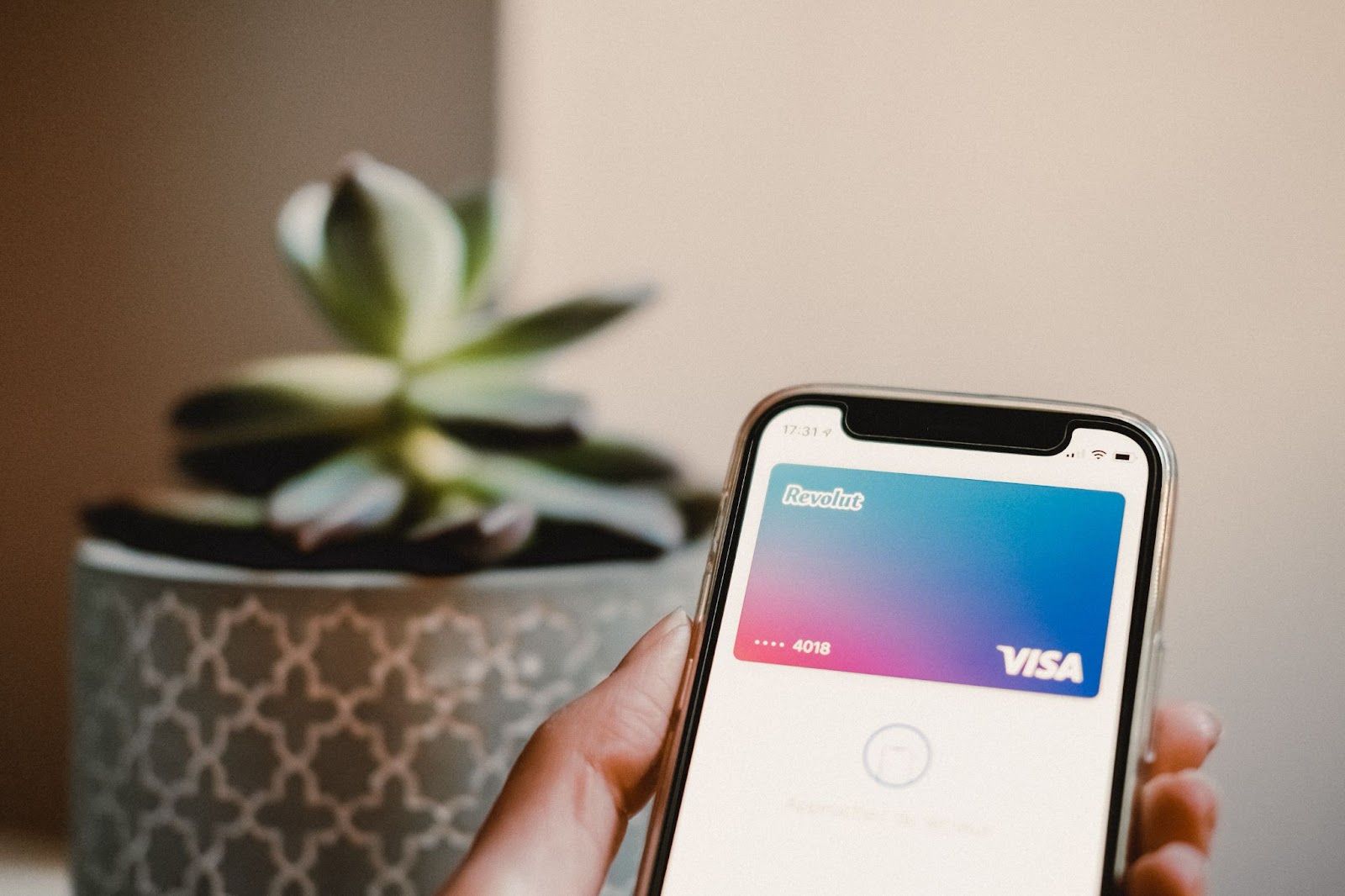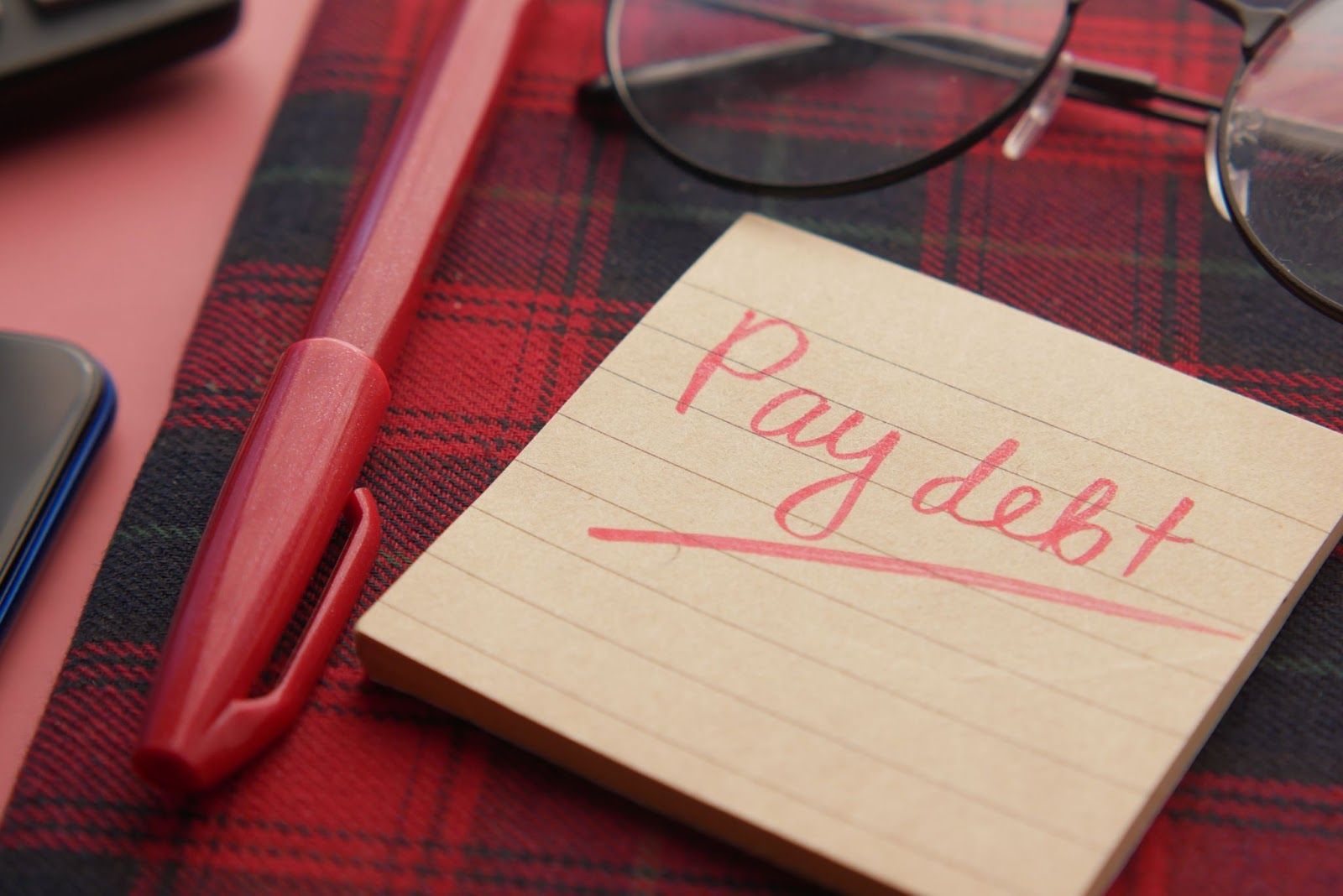How to Use a Credit Card

One of the best ways to make purchases is through credit cards. Depending on your card issuer and type of credit card, you can earn rewards while simultaneously building your credit scores. While using a credit card correctly will benefit your future expenses immensely, the opposite could be detrimental to your financial health.
Prior to obtaining one or even thinking of getting one, it is important to understand how credit cards work, how to choose the right one, and how to use them responsibly. This article will highlight the proper steps to effectively use and manage your credit card account.
Get Matched to Thousands of Scholarships
Create your Bold.org profile to access thousands of exclusive scholarships, available only on Bold.org.
Create Free ProfileUnderstanding Credit Cards
After a certain age, you might often hear more friends and family taking out credit cards or even having numerous ones. In order to fully understand whether it is the right step, you need to be properly educated on all aspects of the credit card.
Taking care of one requires a lot more responsibility than it may appear. Yet, once it's mastered, you will be adequately prepared to have your first credit card.
What is a Credit Card?
A credit card is a payment method that allows you to pay for items using borrowed money from a financial institution. Each purchase is financially supported by a loan that you must repay with interest at the end of the month. Using credit cards to make everyday purchases is convenient because it gives you time to allocate your budget for the month. You don't have to worry about not having enough money if it's coming next week or later.
However, although credit cards may seem like that it is crucial to remember that credit cards are not free money and should not be treated as such. When you use your card, you are taking on debt you will need to repay. You should never spend more than you have available in your bank account; otherwise, you risk taking on impending debt. Failure to pay off your balance in full each month will result in being charged interest on your outstanding balance, which can add up quickly over time.
Types of Credit Cards
Every credit card is different as a variety of credit cards are available, each with its own set of benefits and drawbacks. You may choose to have multiple types or one singular one. Some of the most common types of credit cards include:
General-purpose cards: These cards are accepted at all locations that allow credit cards as a payment method. Banks or credit unions typically issue them with a range of features and benefits.
Store-specific cards: You might hear some of your favorite stores offer their own credit card, which is unique to that school. These cards are only accepted at certain retailers and are usually issued by the retailer. They may offer perks like discounts or rewards for shopping at the store.
Rewards cards: These cards offer rewards for using the card to purchase. Rewards may include cash back, points that can be redeemed for travel or merchandise, or other perks.
Low-interest cards: These cards come with a lower interest rate than other credit cards, which can be helpful if you carry a balance from month to month.
No-fee cards: These cards don't charge an annual fee for using the card, which can save you money over time. The Bold Credit Card is an exceptional example of this, as the student credit card has no fees, including foreign transaction fees. It is a great choice for college students wanting to begin with an affordable and easy card.

Before choosing a credit card, consider your spending habits and financial goals carefully. If you travel frequently, a rewards card that offers travel perks may be a good choice. A low-interest card may be a better fit if you tend to carry a balance on your card. Be sure to read the fine print and understand the terms and conditions of any credit card you are considering.
Credit Card Terms to Know
When using a credit card, there are several key terms you should be familiar with:
APR: The annual percentage rate is the interest rate charged on your outstanding balance. This rate can vary depending on the card and your creditworthiness.
Credit limit: This is the maximum amount of credit - or borrowed money - you can use on your card. You may not spend over this limit without putting yourself in a difficult position. The card issuer will determine your credit limit based on your credit history and other factors.
Billing cycle: This is the period of time between billing statements and when your credit card bill is due. During this time, you can use your card to make purchases, and any balances you accrue will be included on your next billing statement. This is usually completed in monthly payments but may differ on the type of credit card.
By understanding these key terms, you can make informed decisions about how to use your credit card and avoid costly mistakes.
Applying for a Credit Card
Assessing Your Credit Score
Your credit score dictates your eligibility for big expenses in the future. Whether that is taking out a loan or renting an apartment, a higher credit score will make the outcome go more in your favor.
Most credit card issuers will do a credit check in order to pre-approve you for the credit card. There might be a minimum score, so check out your credit score to see which ones you qualify for. Your credit score is a number that reflects your creditworthiness and helps lenders determine your credit risk. Good credit scores can help you qualify for lower interest rates and better credit card terms.
There are many ways to check your credit score. You can get a free credit report from each of the three major credit bureaus once a year. You can also sign up for a credit monitoring service that will regularly update your credit score. It's important to check your credit score regularly to ensure that there are no errors or fraudulent accounts on your report.

Luckily, if you have not had the experience to build credit beforehand, student credit cards accept applicants with beginner credit. The Bold Credit Card is designed for this particular reason and helps those get comfortable with their first credit card by also redeeming easy-to-earn bold points as a way to pay off student loans.
Choosing the Right Credit Card.
By keeping your lifestyle in mind, find a credit card that is reflective of your financial choices and goals. Look for credit cards that offer perks and bonuses for purchases you are already interested in. That way, it will be worth it.
Always read the fine print when choosing a credit card. Before applying, ensure you understand the interest rates, fees, and rewards programs. Some credit cards may have hidden fees or restrictions that could cost you money in the long run. To avoid taking on additional debt, you want a credit card that costs as little as possible.
Completing the Application Process
The application process for any credit card can be a lot of work. It requires a lot of strenuous paperwork but will be worth it in the end. Given that the credit card requires a lot of trust from the issuer, it takes time to confirm your information and ensure whether or not that respective credit card is a good fit for both parties.
In order to complete the application process, you will have to submit personal and financial information. Many credit card issuers offer online applications for convenience. After submitting your application, you may need to wait a few days for approval and to receive your card.
While checking your credit score for pre-approval, some organizations may cause your credit score to dip a little bit. Applying for too many credit cards at once can negatively impact your credit score. Each time you apply for a credit card, the issuer will pull your credit report, which can lower your score slightly. It's best to apply for one credit card at a time and wait until you are approved before applying for another.
Once approved, please remember to use it responsibly. Mark down the dates your bill is due to avoid late fees and interest charges. Also, try not to spend too much and keep your credit utilization ratio low by only using a small percentage of your available credit. This will help improve your credit score and make it easier to qualify for loans and other credit products in the future.

Activating and Setting Up Your Credit Card
Activating Your Card
Your card issuer will send your credit card in the mail a couple of days following your pre-approval. Receiving a credit card is always an exciting moment. However, you need to activate your card before you can use it. Activating your credit card is a simple process that takes no more than a couple of minutes. Typically, it can be done by calling the phone number on the sticker located on the front of your card or through the banking app by confirming some personal information. The customer service representative will guide you through the process and ask you to provide your card number and other components needed to verify your identity.
Some credit card issuers require you to activate your card within a certain period of time after receiving it. Failure to activate your card within this given time frame may risk the status of your account.
Setting Up Online Access
In today's digital age, managing your credit card account online is a convenient and easy way to keep track of your balance, transactions, and payments. To set up online access, you will need to visit your credit card issuer's website and create an account. You will be asked to provide your card and personal information, such as your name, address, and social security number.

With this account, you will be able to access your credit card information from anywhere at any time. You can easily view your current balance, check your transaction history, and make payments online. To make it easier, some credit card issuers even offer mobile apps that allow you to manage your account from your smartphone.
The Bold Credit Card makes it convenient for credit card holders by incorporating their banking information dashboard on the platform. This way, students can access their scholarships, bold points, and credit card bills all in one place.
Creating a Personal Identification Number (PIN)
Some credit cards require a personal identification number (PIN) for cash advances or other transactions. A PIN is a four-digit code of your choosing, adding an extra layer of security to your credit card account. Whenever any purchase is made on your credit card, it will be prompted for this PIN number to confirm it is you. The PIN can usually be set up by calling the customer service number on the back of your card. The representative will guide you through the process and ask you to choose a four-digit code that you will remember.
You may also be able to set up a PIN at an ATM that accepts your credit card. Just follow the on-screen instructions to create your PIN after inserting your credit card into the machine. Keep in mind that not all ATMs offer this option, so it is important to check with your credit card issuer first.
In conclusion, activating and setting up your credit card is a simple process that can be done in just a few steps. By activating your card, setting up online access, and creating a PIN, you can ensure your credit card account is secure and ready to use whenever needed.
Making Purchases with Your Credit Card
Using a credit card can be a convenient way to make purchases, whether you're shopping in-store, online, or over the phone. The nature of credit cards may be really easy, making it more enticing to use constantly, but you must understand how to use your credit card properly to avoid overspending and accumulating debt.
How to Swipe or Insert Your Card
When you're making a purchase in-store, you'll need to swipe or insert your credit card into the merchant's point-of-sale terminal. This terminal reads your card information and processes the transaction.
Once you've inserted or swiped your card, follow the prompts on the screen to complete the transaction. Depending on the merchant's requirements, you may need to enter your PIN or sign the receipt. Make sure to keep your receipt if you need to return the item or dispute the transaction.
Some credit card issuers also support contactless payments, such as Apple Pay or Paypal, allowing you to purchase using your phone or other mobile devices. To use contactless payments, add your credit card to your mobile wallet and hold your device over the card reader.
Online and Phone Transactions
If you're making a purchase online or over the phone, you'll need to enter your credit card information as prompted. Before giving out your credit card information, make sure it is a secure website to protect your personal and financial information.
For further security, you may also use virtual credit cards for online transactions. These cards generate a unique number for each transaction, so even if your information is compromised, the thief won't be able to use your card for future purchases.
Overall, using a credit card can be a convenient way to make purchases, but it's important to use your card responsibly and only spend what you can afford to pay back. By following these tips, you can make the most of your credit card while avoiding debt and financial stress.

Managing Your Credit Card Account
The most important part when it comes to owning a credit card is the monthly payments and managing the entire account. Depending on how you are in this aspect will determine your credit score and ability to have more credit cards in the future. Here are some tips to help you manage your credit card account:
Understanding Your Billing Cycle
Each credit card has a billing cycle that determines when your statement is issued and when payments are due. Typically, a billing cycle lasts for about a month. It's important to understand your billing cycle so that you can plan and budget for your credit card payments accordingly. Your billing cycle may also affect the timing of your credit card rewards or cash back.
For example, if your billing cycle ends on the 20th of each month and you make a purchase on the 21st, that purchase will be included in your next billing cycle. This means that you won't see the charge on your credit card statement, and the expense is not due until the following month. Understanding your billing cycle can help you avoid surprises and stay on top of your credit card payments.
Making Payments on Time
The most important thing you can do while managing your credit card account is to make timely payments. Late payments can result in additional fees, increased interest rates, and negative impacts on your credit score. It's important to make at least the minimum monthly payment on your credit card to avoid these consequences.
There are several ways to make credit card payments. You can make payments online, by phone, or by mail. Some credit cards offer automatic payments as a convenient option to ensure on-time payments. With automatic payments, your credit card company will automatically deduct the minimum payment or a specified amount from your bank account each month. Automatic payments could potentially help your credit score as well.

Monitoring Your Account Activity
Regularly monitoring your credit card account can help you notice fraudulent activity and optimize your credit card benefits before it is too late. You can view your transactions, check your balance and credit limit, and track your rewards or cash back on your online account or mobile app.
Regularly monitoring your account activity can also help you identify areas where you can improve your credit card usage. For example, suppose you are using a high percentage of your credit limit. In that case, you may want to consider reducing your spending or increasing your credit limit to improve your credit utilization ratio.
It is also important to review your credit card statement each month. It provides a summary of your account activity, including your balance, payments, and any fees or interest charges. Reviewing your statement can help you identify any errors or discrepancies and ensure that you're staying within your budget.
Maximizing Credit Card Benefits
Earning Rewards and Cash Back
Credit cards offer various rewards and cash-back programs that can help you earn points or money for purchases. Some cards offer bonus rewards for sign-up or certain spending categories, while others may have high earning rates for all purchases. Double-check the criteria needed to earn your rewards.
Utilizing Cardholder Perks
Many credit cards offer additional perks like travel insurance, extended warranties, and concierge services. These perks can help you save money and make your life easier. Check your credit card agreement for more information about what perks are available to you.
Building Your Credit Score
Making on-time payments and using your credit card responsibly can help build your credit score. Good credit scores can help you qualify for lower interest rates on credit cards, loans, and mortgages. Use your credit card strategically to build your credit over time to set you up for a proper financial future.
Avoiding Common Credit Card Mistakes
Overspending and High Balances
One of the most common credit card mistakes is spending well beyond the budget and carrying high balances. This can lead to high-interest rates and fees that can be difficult to pay. Set a budget for your credit card spending and pay off your balances in full each month to avoid these issues.

Late Payments and Fees
Missing credit card payments can lead to late fees and negative impacts on your credit score. Set up automatic payments or reminders to ensure you make payments on time.
Fraud and Identity Theft Prevention
Protecting your personal and financial information is crucial in preventing fraud and identity theft. Be aware of phishing scams and monitor your credit card activity regularly. If you suspect fraud, report it immediately to your credit card issuer.
Using a credit card can offer many advantages if used responsibly. Understanding how credit cards work, choosing the right one, and effectively managing your account can help you navigate the world of credit and maximize your benefits.
Frequently Asked Questions About Credit Cards
Can you use a credit card to pay tuition?
Yes, paying off tuition with credit cards is possible, but it may not always be the best idea. While some educational institutions may allow students to authorize acceptable credit cards, there may be financial implications for doing so. In most cases, tuition payments far exceed the credit limit putting you in a difficult situation for your financial future. Furthermore, credit cards might charge an additional processing fee, which could increase the price overall. Alternative ways to pay off tuition include scholarships and student loans.
What are the fees associated with credit cards?
Every credit card will be different, but they typically have several fees, including annual, late payment, foreign transaction, balance transfer, and cash advance fees. Always review the terms and conditions of your credit card to understand its associated fees because they can add up and force you to pay more than you need to.
The Bold Credit Card is a student credit card offered through Bold.org with no hidden fees associated with the card. Students may build their credit while simultaneously paying off student loans without the additional pressure of paying expensive fees.
Create a Bold.org profile and apply to The Bold Credit Card and use the scholarship search feature to access hundreds of exclusive scholarships.